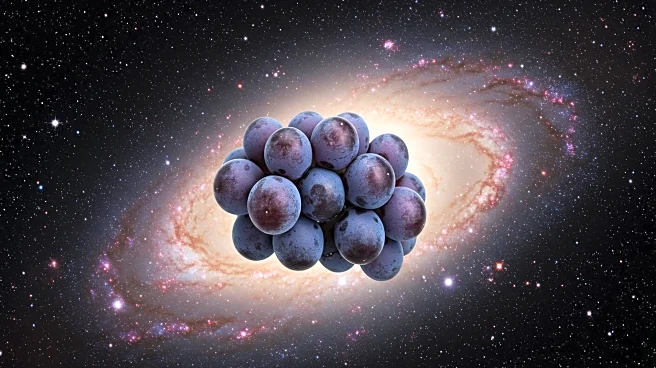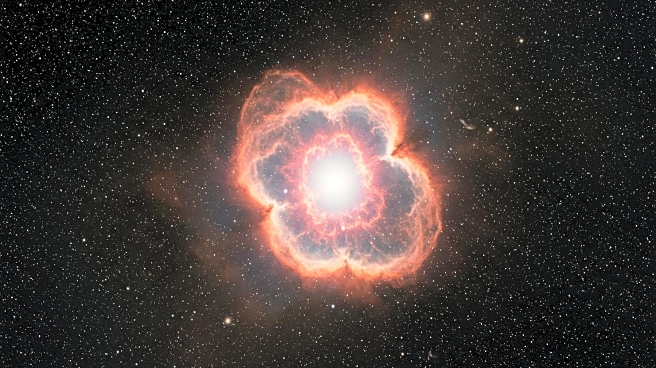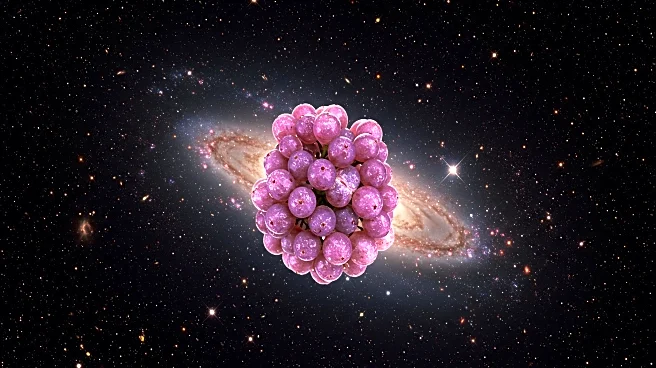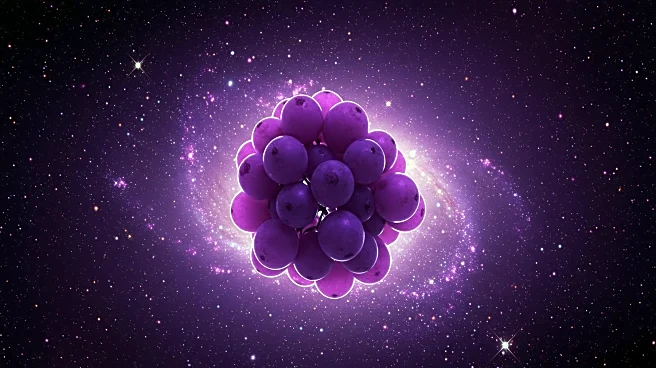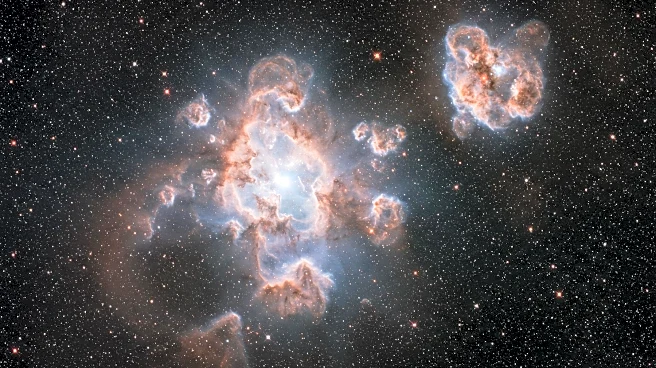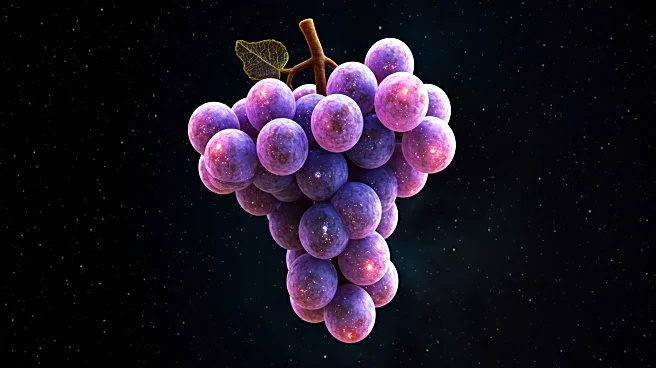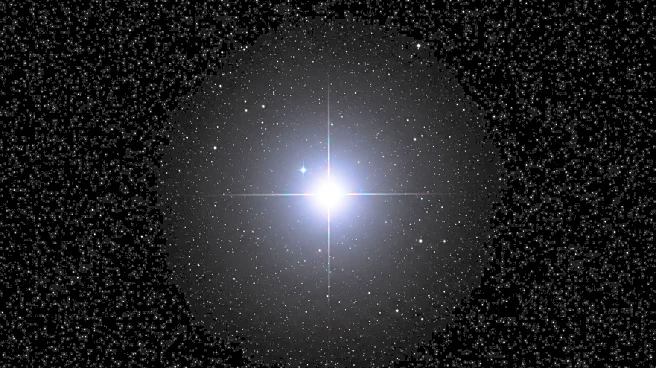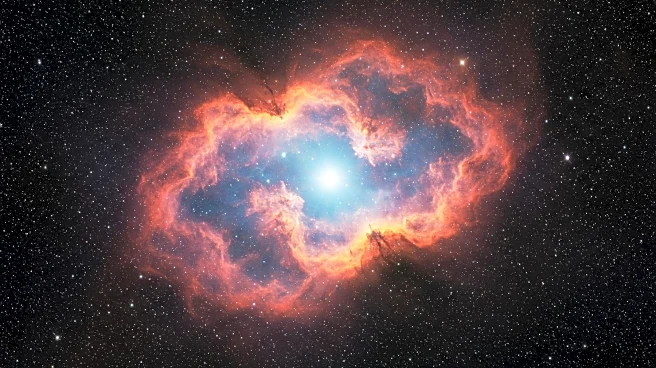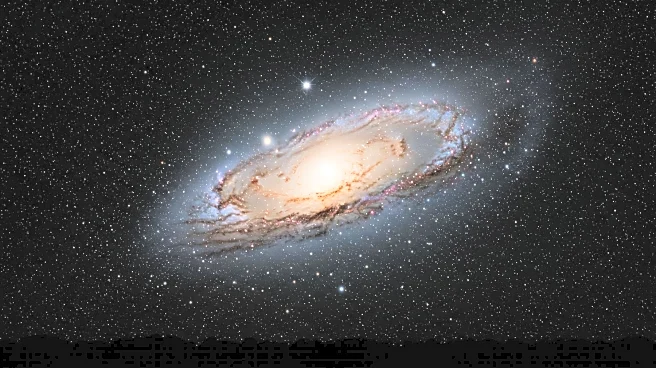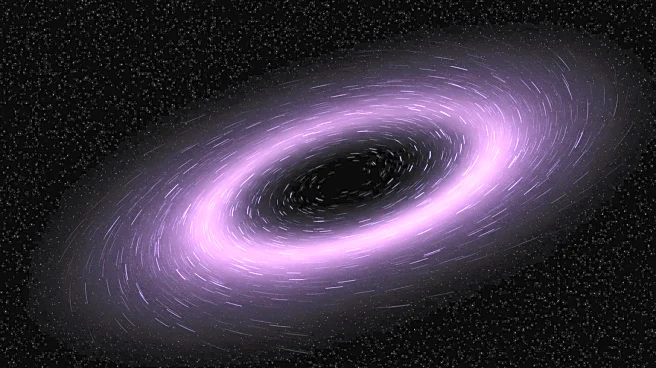What is the story about?
What's Happening?
Astronomers have discovered a distant galaxy from the early universe, referred to as 'Cosmic Grapes,' using one of the strongest gravitational lensing events ever observed. This phenomenon, where a massive object like a galaxy bends and magnifies the light from a more distant galaxy, allowed researchers to study the galaxy's internal structure with unprecedented detail. The study, led by Seiji Fujimoto and published in Nature Astronomy, utilized data from advanced telescopes, including the Hubble Space Telescope and ALMA, to reveal dense clumps of star formation within the galaxy, challenging traditional models of galaxy formation.
Why It's Important?
The discovery of dense clumps within early galaxies suggests that galaxy formation was more dynamic and complex than previously thought. This challenges existing theories and provides new insights into the mechanisms of star formation and galaxy assembly in the early universe. Understanding these processes is crucial for piecing together the cosmic history of galaxy formation and evolution. The study highlights the potential of gravitational lensing as a tool for exploring distant galaxies and gaining insights into the early universe's structure and dynamics.
What's Next?
Future research will focus on refining observational techniques and using more advanced telescopes to study even more distant galaxies. This could lead to further discoveries about the early universe and the role of clumpy star formation in galaxy evolution. Continued exploration of gravitational lensing events will enhance our understanding of how galaxies formed, evolved, and interacted over cosmic time scales.
AI Generated Content
Do you find this article useful?
